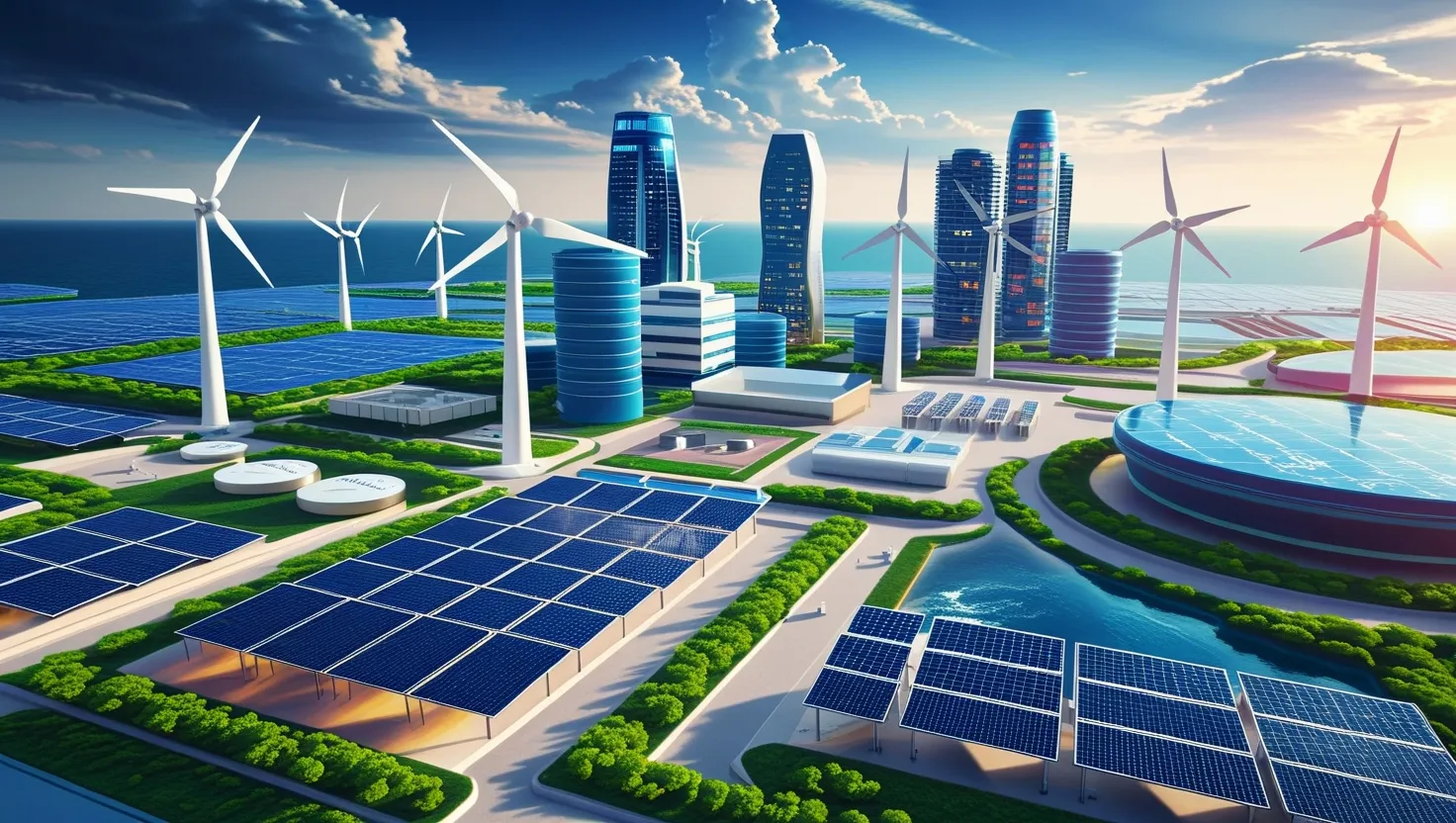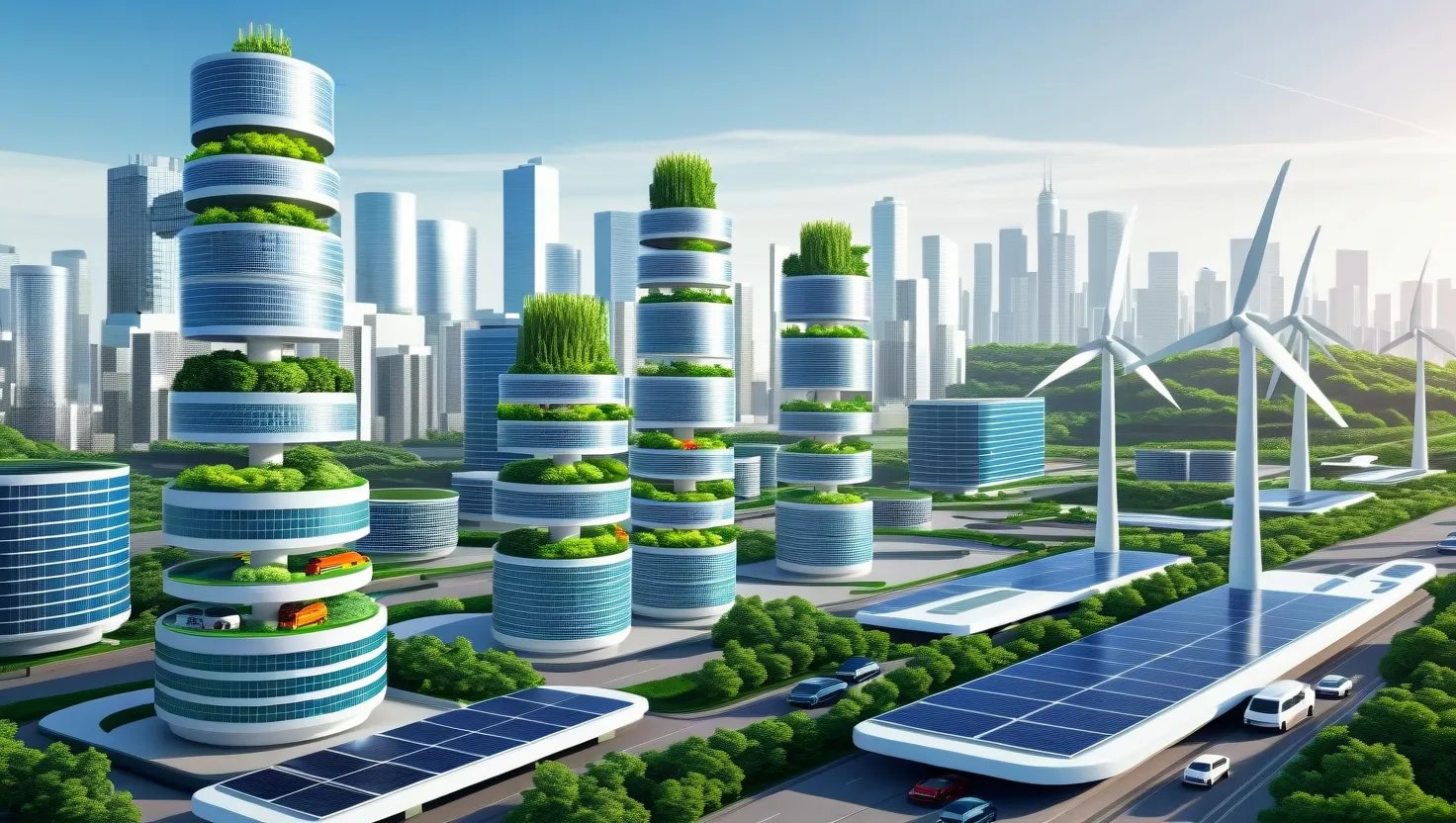As we stand at the threshold of a new year, the world is abuzz with excitement over the revolutionary advancements in renewable energy. These innovations are not just incremental improvements but game-changers that could significantly alter the global energy landscape. Let’s delve into six cutting-edge developments that are poised to make a substantial impact.
Perovskite Solar Cells: The Efficiency Champions
Imagine solar panels that are not only more efficient but also cheaper and faster to produce. This is the promise of perovskite solar cells, a technology that has been making waves in the renewable energy sector. These cells use a unique crystal structure that absorbs different wavelengths of light, making them more efficient than traditional silicon cells.
“The stone the builders rejected has become the cornerstone,” a phrase often used in various contexts, could aptly describe perovskite solar cells. They have gone from being an experimental curiosity to a serious contender in the solar energy market. With efficiencies exceeding 34%, these cells are outperforming traditional silicon cells, which typically max out around 27% efficiency.
But what makes perovskite cells so special? It’s their ability to layer on top of silicon, creating tandem cells that capture a broader spectrum of light. This layered structure allows for higher power output and greater efficiency. However, the real challenge lies in their durability; perovskites are sensitive to water and heat, which can cause them to degrade faster than silicon cells. Yet, advancements in encapsulation techniques are slowly but surely addressing this issue.
Airborne Wind Energy Systems: Tapping the Skies
High above the ground, where the winds are stronger and more consistent, a new type of wind energy system is taking shape. Airborne wind energy (AWE) systems involve flying turbines or kites that harness the power of high-altitude winds. This technology promises to be more efficient and cost-effective than traditional wind turbines.
“Wind is the breath of the earth,” as the ancient Greeks might have said. AWE systems capitalize on this breath by flying high above the ground, where wind speeds are often twice as strong as those near the surface. This means fewer turbines are needed to generate the same amount of power, reducing both the visual impact and the cost.
But how do these systems work? Essentially, they use tethered kites or drones equipped with turbines. As the wind turns the turbines, electricity is generated and transmitted back to the ground via the tether. It’s a simple yet ingenious solution that could revolutionize wind energy production.
Ocean Thermal Energy Conversion: Harnessing the Ocean’s Power
The oceans cover over 70% of our planet, and within their depths lies a vast, untapped energy source. Ocean thermal energy conversion (OTEC) leverages the temperature difference between the warm surface waters and the cold deep waters to generate electricity.
“The sea, once it casts its spell, holds one in its net of wonder forever,” wrote Jacques Cousteau. OTEC systems are a testament to this wonder, using the natural temperature gradient of the ocean to drive a heat engine. This process can produce electricity continuously, regardless of weather conditions or time of day.
OTEC plants typically involve a closed-cycle system where a working fluid is heated by the warm surface water, causing it to expand and drive a turbine. The cold deep water then condenses the fluid back into a liquid, allowing the cycle to repeat. While the technology is still in its infancy, it holds immense potential for providing baseload power in coastal regions.
Advanced Grid-Scale Energy Storage: The Battery Revolution
As renewable energy sources become more prevalent, the need for efficient energy storage solutions grows. Advanced grid-scale energy storage technologies like flow batteries and compressed air systems are stepping up to meet this challenge.
“The future belongs to those who believe in the beauty of their dreams,” said Eleanor Roosevelt. The dream of a fully renewable energy grid is becoming more feasible with the advent of these storage technologies. Flow batteries, for instance, store energy in liquid electrolytes in external tanks, allowing for flexible and scalable energy storage. Compressed air systems, on the other hand, store energy by compressing air in underground caverns, which can then be expanded to generate electricity when needed.
These systems are crucial for stabilizing the grid and ensuring a smooth transition between different energy sources. They can absorb excess energy during peak production times and release it during periods of high demand, making the entire energy system more efficient and reliable.
Artificial Photosynthesis: Converting Sunlight into Fuel
Nature has long been a source of inspiration for human innovation, and one of the most fascinating natural processes is photosynthesis. Scientists are now working on artificial photosynthesis, a technology that mimics the way plants convert sunlight into chemical energy.
“Nature is not a place to visit. It is home,” as Gary Snyder once said. Artificial photosynthesis aims to bring this natural process into our homes and industries by converting sunlight directly into fuels like hydrogen or methanol. This is achieved through complex chemical reactions that split water molecules into hydrogen and oxygen using sunlight as the energy source.
The potential impact is enormous; imagine being able to produce clean fuels without the need for fossil resources. This technology could revolutionize transportation and industrial processes, making them far more sustainable.
Small Modular Nuclear Reactors: The Future of Nuclear Power
Nuclear energy, despite its controversies, remains a significant player in the global energy mix. Small modular nuclear reactors (SMRs) are the latest innovation in this field, offering a safer, more adaptable, and cost-effective alternative to traditional nuclear power plants.
“The nuclear industry is a very complex and challenging field,” notes a nuclear engineer. SMRs are designed to be smaller, more modular, and easier to construct than conventional reactors. This modularity allows for faster deployment and lower upfront costs, making nuclear energy more accessible to a wider range of countries and communities.
SMRs also boast enhanced safety features, such as passive cooling systems that can operate without external power sources. This reduces the risk of accidents and makes them more suitable for deployment in a variety of settings.
The Future of Energy: A Call to Action
As we explore these cutting-edge developments, it’s clear that the future of energy is bright and full of promise. But the transition to a sustainable energy landscape requires more than just technological advancements; it demands collective action and support.
“The best way to predict the future is to invent it,” said Alan Kay. We have the tools and the knowledge to create a future powered by clean, renewable energy. Now, it’s up to us to make it happen.
So, what can you do? Start by supporting companies and policies that promote renewable energy. Invest in energy-efficient technologies for your home and business. And most importantly, spread the word about the importance of transitioning to a sustainable energy future.
Together, we can make a difference and ensure that the energy of tomorrow is cleaner, more efficient, and available to all. The journey ahead is exciting, and with these innovations leading the way, we are on the cusp of a revolution that could change the world forever.






